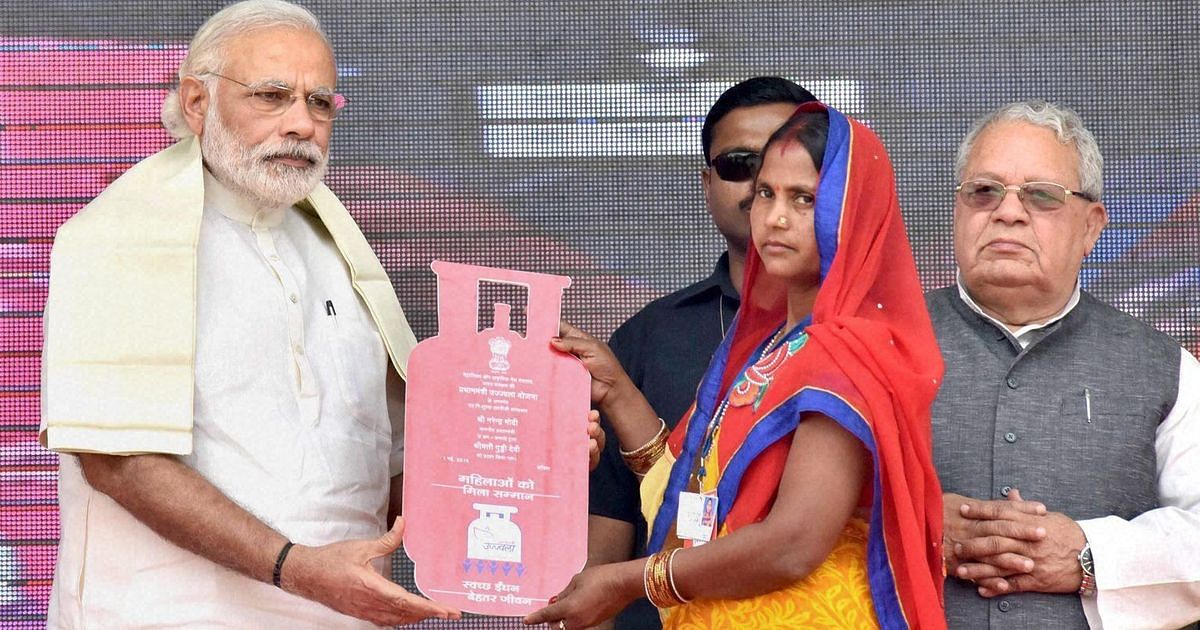
Pocket oxygen, air purifiers, anti-pollution masks are now the norm in many cities. As New Delhi chokes under pollution and many more Indian cities follow suit, it is important to analyse the extent of the damage, not just outdoors, but even indoors.
Indoor air pollution in rural areas is a major health hazard afflicting India, with many independent studies now quantifying the extent of damage. A Lancet study showed that one lakh Indians died due to indoor pollution annually, while the World Health Organization (WHO) reported that smoke from unclean fuels (chullah) is equivalent to smoke from 400 cigarettes per hour. This is due to the fact that rural households are still using chullahs for cooking. The use of Liquefied Petroleum Gas (LPG), which is a healthier alternative to challah, is being advocated across the country.
Among the many government initiatives, the Pradhan Mantri Ujjawala Yojana (PMUY) is looking to address this. According to government figures, it had delivered LPG connections to eight crore BPL households by September 2019. While the intervention was a success in its scale and reach, the challenge at present is the sustained usage of LPG. The CAG performance report mentioned an average 3.21 refills per annum in 2019. Several reasons for this low rate are provided in the report -- implementation flaws, non-compliance of norms, infrastructure barriers, financial disparity, etc. However, the key to tapping the true potential of this intervention lies in inducing behavioral changes among the actors in the scheme through nudges.
Economic Survey 2019 highlighted nudge policies as key to successful implementation of a policy. Nudges encourage individuals to act in a certain way that is considered desirable for the effectiveness of a policy without compromising on their liberty.
The CAG expressed concerns over implementation flaws such as longer delivery times, slower expansion of distributors, etc. This indicates that there is a need to motivate oil marketing companies (OMCs) to perform better. To address this, a competitive framework can be established where different OMCs are rated on various metrics like door-delivery efficiency, delivery time, households covered, etc. The results of this can be made public and the better performers rewarded with additional funding.
For example, to ensure that associates are delivering door-to-door in rural households, a metric that captures the number of pictures taken of an associate handing over the cylinder to households can be introduced. The one with the highest number of pictures can be rewarded. All such metrics can be a part of an exhaustive scorecard. This exercises the nudge tool of ‘social pressure’, encouraging different regions to perform better than the other.
The Bharatmala scheme, which focuses on optimal road connectivity, adopted a similar mechanism called ‘grand challenge’ to encourage faster land availability by different state governments. Top-performing states get rewarded with additional funds and are given higher priority in execution of their project.
One of the key reasons hindering sustained use of LPG is the high cost of refill. In this view, options of 5 kg cylinders and 14 kg cylinders were proposed. The 5 kg cylinder costs just one-third of the 14 kg cylinder. Making it available ensured higher refill rates. However, awareness about these cylinders is less. Thus, to increase the penetration of 5 kg cylinders, beneficiaries can be allotted smaller cylinders by default, with a choice to opt-in for the larger one.
Given that the alternative fuel options of firewood, cow dung, etc., will always be cheaper, it might incentivize people to refrain from using cylinders. To address this, create awareness by broadcasting on television, local radio, SMS alerts, etc. (like in cyclone alerts) and make people mindful of the health benefits and longevity enhancement one gets through adopting LPG.
The Economic survey suggests that the ‘Give it Up’ scheme is laissez faire, on the scale of minimum influence to coercion. Laissez faire implies that there is no mandate to curb a certain action, it is left purely to one’s intent. The ‘Give it Up’ program relied on voluntarily giving up LPG subsidy, but only 14% of the ‘rich’ subscribers have given up subsidy. To achieve better targeting of subsidies, ‘no subsidy’ can be made the default option, with a choice to apply for subsidy if a household desires to avail it.
Additionally, the government can reach out to people via mail, SMS, etc., about how the money it saved is being used. Feedback from the target audience of ‘Give it Up’ scheme revealed that people were unaware of how the saved money was used and worried that it may fuel the wrong causes. This can be solved using the nudge tool of ‘disclose outcomes.’
Approaching the insights into human psychology can skew actions away from habits toward right choices. Countries like the US, UK and Australia leverage this concept. In India, nudge policies are quite evident in the 'Swachh Bharat' scheme. Nudge tactics can induce behavioral change among people and make the PMUY a global example on how age-old habits can be changed for a better future.
(The writer is an intern at Takshashila Institution)